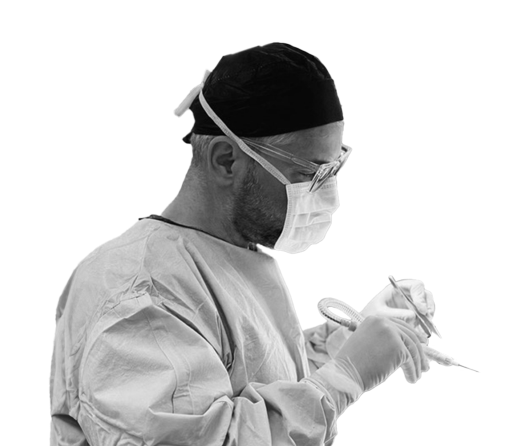Abdominoplasty (also known as a tummy tuck), is a cosmetic surgical procedure that removes excess skin and fat from the abdominal area and tightens the muscles of the abdomen. It is an extensive surgery that will require that you follow some steps during your recovery period to ensure sufficient healing. In this blog, we will outline what to expect during a recovery, to help you feel prepared for post-operative period.
What to expect day-by-day
As a guide, here is what you can expect throughout your Abdominoplasty recovery period. Remember, this is a guide only and the recovery period can be slightly different per patient, depending on the complexity of the procedure and the individual needs of each patient. Ultimately, you will discuss the details of your recovery during your consultation with your surgeon prior to surgery.
The first few days
Immediately following your abdominoplasty surgery, you can generally expect to experience some discomfort and pain. This is normal after a major surgical procedure and your surgeon can prescribe pain medication to help manage your symptoms. You may also be given a compression garment to wear to minimise swelling and support contouring in the abdominal area. You should plan to have someone stay with you for at least the first 24 to 48 hours after your surgery to help you with daily tasks.
During these first few days, it is important to rest as much as you can. You should avoid any strenuous exercise, limiting your movements to slow, gentle walking around your home. Your surgeon may also recommend that you sleep in a reclined position, with your head elevated to help reduce swelling. You may be able to manage this by sleeping on an extra pillow.
Days 3 to 7
As your body heals, you can expect any pain and discomfort to subside, although you may need to continue to take your prescribed pain medication. Within a week of recovery, patient’s can typically begin to move around more comfortably, but intense exercise and heavy lifting should still be avoided.
A step you can take during this time to aid in your recovery process is to maintain a healthy diet and drink enough water. Focus on nutrient-rich foods, and make sure that you are not showing any signs of dehydration. While this is important during the early stages of your recovery, maintaining your general health is crucial throughout the entire post-operative stage.
Days 8 to 14
After two weeks, you should begin to have more energy and experience less discomfort. This can allow you to resume some normal daily activities, like cleaning the house, but you will still need to ensure that you are giving your body sufficient rest and avoid strenuous activities. If your surgeon has instructed, you may be able to wear your compression garment less and shower as normal.
Weeks 3 to 4
By this time, you may be able to return to work, if your surgeon has advised. However, you will still need to avoid lifting heavy objects and avoid strenuous exercise, as this will still need to be slowly resumed with caution.Within a month, your results should start to slowly become noticeable, although your final results will require some patience as they will show after your body has completely healed, which can take several months.
Months 1 to 3
As you continue to heal, you should gradually be able to resume more strenuous activities such as exercise and heavy lifting. However, it is important to follow your surgeon’s instructions and gradually increase your activity level to avoid injuring yourself. You may also need to continue wearing your compression garment during this time. Your surgeon will let you know when it is okay to stop wearing it.
It is important to remember that everyone’s recovery timeline is different, and it may take longer for some people to fully recover. It is also important to be patient and take the time you need to heal properly to ensure the best possible outcome.
Tips for recovery
After your procedure, you will need to follow some post-operative instructions to ensure sufficient healing, reduce your risk of complications. Each patient will receive a personalised set of recovery instructions, based on their individual needs, lifestyle, health history and specific procedure details. However, general tips to navigate your recovery can be beneficial to any patient.
- Follow your surgeon’s instructions carefully. Your surgeon will provide you with specific instructions on how to care for your incisions, when to remove your compression garment, and when to resume certain activities. It is important to follow these instructions closely to prevent complications.
- Take it easy. Allow yourself plenty of time to rest and recover. Avoid any strenuous exercise or lifting heavy objects for at least six weeks after surgery. Too much activity too soon can cause complications and delay the healing process.
- Eat a healthy diet. Proper nutrition is crucial for healing and recovery. Make sure to eat plenty of fruits, vegetables, lean protein, and whole grains. Avoid processed foods, sugary snacks, and excessive amounts of salt, as they can contribute to swelling and inflammation.
- Stay hydrated. Drinking plenty of water can help reduce swelling and support your general health, which is important throughout your recovery.
- Manage your pain. If you have been prescribed pain medication, make sure that you follow your surgeon’s instructions closely. If you are struggling with significant pain, make sure that you contact your surgeon for advice.
- Get enough sleep. Sleep is essential for healing and recovery. Make sure that you are getting sufficient rest of at least eight hours per night. If you feel tired throughout the day, allow yourself to take naps as you need!
- Wear loose, comfortable clothing. Tighter clothing can feel uncomfortable to wear during your recovery and can also be hard to put on and take off with possibly restricted movement. Before your procedure, purchase some loose clothing that won’t put any pressure on your chest.
- Take care of your incisions. Your surgeon will provide you with detailed instructions on how to care for your incisions throughout your recovery. Generally, you will need to keep your incisions clean and avoid using irritating products on the area.
- Attend follow-up appointments. Your surgeon will schedule follow-up appointments to monitor your progress and ensure that you’re healing properly. Make sure to attend these appointments and communicate any concerns or issues you may be experiencing.
- Be patient. Remember that healing takes time, and it may take several weeks or even months to see the full results of your abdominoplasty. Don’t get discouraged if you don’t see immediate results, and be patient as your body continues to heal and recover.
Why to choose Dr Tavakoli for Abdominoplasty surgery in Sydney
Abdominoplasty can be a life-changing procedure. You will want to choose a qualified and experienced plastic surgeon.
At his Sydney clinic, Dr Tavakoli takes a patient-centred approach, prioritising clear communication and ensuring that patients feel understood and empowered throughout their journey. If you’re ready for abdominoplasty, contact our team to organise a consultation.

